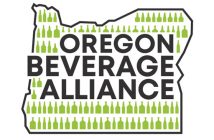I don’t mean to alarm you but think about this:
Only about 6 percent of chief sales officers are super confident in their team’s ability to do their thing and meet or exceed preset revenue goals.
Amid rising competition and a plethora of information readily available to users today, it’s becoming tougher for b2b vendors to claim their fair market share.
How can you differentiate yourself? What can you do to inspire consumer confidence in your brand and get them to buy from you? We look at five digital strategies that may help revv up your sales.
1. Use Predictive Analytics
Predictive analytics isn’t just good for lead generation. It compiles insights that allow teams to understand the content, offers, and services that hit all the right notes with customers.
You can isolate customer segments to map their journey and understand their drivers, the channels they prefer, and more importantly what turns them off.
By embracing predictive analytics you can:
- Predict buying behavior. People are fairly predictable—they buy, run out, buy again, run out… the cycle goes on. The key thing is discovering when they purchase and the quantity (or service tier). With this info, you can prioritize key accounts, manage the purchase process more efficiently and create realistic sales forecasts.
- Identify product strengths or weaknesses. This is especially true for those who run multiple product lines or offer tiered services. Analytics can reveal which products/services are on the up and those on the decline. You can then identify the cause (competition, irrelevance, etc) and make adjustments.
- Catch slipping customers. Related to point one above is the ability to quickly spot customers who are slipping through the cracks. You can then pick up the phone and salvage the situation.
- Optimize pricing. Analyzing data allows you to see key financials for your offerings to help you determine the best value pricing without undermining your business or customers.
2. Referrals Are Gold Mines
Statistics show that potential customers referred to a brand by friends are more likely to make purchases compared to other customers. Leveraging referral marketing allows you to boost your sales and build your brand name as well.
How do you do it?
- Solidify your offerings. People will hardly recommend products or services they didn’t enjoy. Look through your reviews and responses from surveys to gauge your current customer satisfaction. Fix the issues and improve UX before asking for referrals.
- Identify customers whom you’ve built strong relationships with. They will probably be your best advocates. Strive to better your relationships with all your customers. Listen to their motivations, concerns, and unspoken needs, keep communication open and offer support at all stages.
- Prepare your team. Gauge your team’s capacity to handle extra customers. If the new customers are dissatisfied, they might leave bad reviews, and worse let the referrer know who will then desist from referring you. The downward spiral may cost you a lot of business.
3. Cold Calling
We mostly think of cold calling as just making phone calls, so we pick up a list of contact and start dialing. Our conversations go along these lines:
“Hello Mr…….. my name is……. from…… I would like to tell you about our products (or services). We offer…”
The line disconnects.
Why?
Because in as much as you’ll be dialing numbers and speaking with people you don’t know, there’s a technique to follow.
We no longer make intrusive calls, with zero qualification hoping that one or two out of the 100 prospects will resonate. That will just waste your time, bring in a ton of rejections and lead to burnout.
Here are effective practices to consider for this strategy:
- Identify your verticals and good-fit prospects. Identify niche markets whose pain points your solutions can remedy. Research specific companies to have a feel of their size, what they do specifically, and what their customers are saying about them. It may help point out problems.
- Write your script. Introduce yourself then, move to establish rapport. Mention a common interest or a recent achievement to lighten the mood the drop your positioning statement. This statement says you’ve worked with organizations similar to theirs and understand the challenges they face.
- Ask open-ended questions. The positioning statement makes the conversation about them and not you. Now go for open-ended questions and listen actively to ensure you extract useful information that may help you package specific solutions for their challenges.
- Anticipate objections. As you make calls, you’ll start picking up common objections that your prospects bring up. They may range from skepticism to pricing or working with your competition. You can deal with these objections by say, allaying doubts (through social proof), offering a multiple options range, or respectfully pointing out your differentiators.
4. Video Marketing
Words are great and we love them but there are many times when visual elements, specifically videos, do a better job at convincing prospects to buy.
A survey by Wyzowl provides some eye-opening statistics. More than 80 percent of marketers reported videos increased website traffic and directly influenced sales. A further 94 percent that used video as an education medium said it helped improve users’ understanding of their offerings.
Best examples of videos that drive sales include explainer videos, product demos, how-to videos, interviews, testimonials, and product updates.
How do you create these winning videos?
- Customize your videos in line with the stage your prospects are on. Introductory videos are great for new leads while longer and informative videos work better for potential customers whom you’ve had some back and forth with.
- Keep your videos concise. Professionals are busy and may not have much time to view very long compilations. Keep the video short and tackle all the important stuff early so your viewer can find value immediately.
- Embed 3D animated videos on landing pages. Consider replacing long sentences that explain multiple or complex features with videos. 3D animations are a fun way to explain sophisticated solutions and boost prospects’ engagement.
- Think about distribution. Since you’re targeting B2Bs, LinkedIn is a great medium, but you should consider all social channels they use. Add your videos to your email campaigns and have them on your website.
5. Focus on Customer Experiences
According to McKinsey, companies that transform customer experience processes to improve user experiences see a 10 to 15 percent increase in revenues. Costs to serve to reduce while employee satisfaction goes up.
Everyone goes home happy.
Consider the following:
- Make online interactions. Many B2B vendors lack page optimization to promote easy user interactions. Optimize your website by offering complete overviews of your services, reducing steps needed to complete actions like placing orders and predicting order errors. Improve user interface to make it friendlier.
- Improve response time. If customers feel like you take too long to respond or the orders have time restrictions, they are likely to leave. Add chatbots to handle easy tasks and train your team to respond quickly to inquiries or complaints. For products, be sure to facilitate quick deliveries or return.
- Map your customer’s journey. Brainstorm narratives that may help attract customers at every point and implement them. Use back-end integrations to predict customer behavior and personalize touchpoints.









